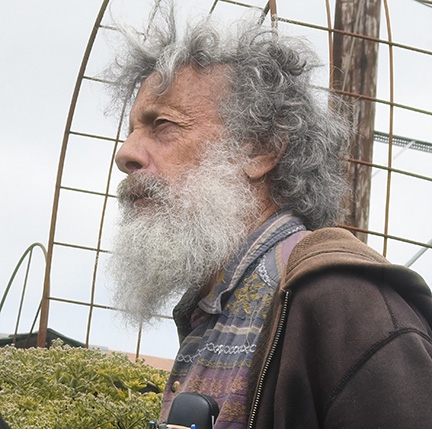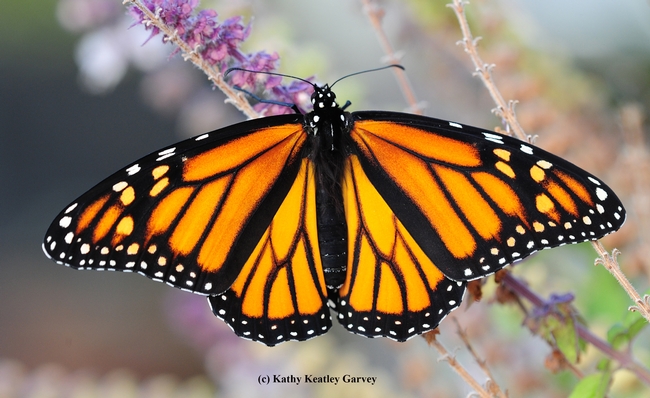- Author: Kathy Keatley Garvey

But...this year ranks as the best milkweed season he's ever seen in California.
Butterfly guru Art Shapiro, distinguished professor of evolution and ecology at the University of California, Davis, has monitored butterfly population trends on a transect across central California for 46 years, from the Sacramento River Delta through the Sacramento Valley and Sierra Nevada mountains to the high desert of the Western Great Basin.
It's been a troubling year.
"I have not seen a wild egg or caterpillar of the monarch this entire calendar year at low elevations," he said Thursday during an interview on the "Insight with Beth Ruyak" program, Capital Public Radio, Sacramento.
"Not one." (Listen to the interview.)
Shapiro, a member of the UC Davis faculty since 1971, and author of the book, Field Guide to Butterflies of the San Francisco Bay Area and Sacramento Valley Regions, visits his 10 sites along the Interstate 80 corridor generally every two weeks "to record what's out." The largest and oldest database in North America, it was recently cited by British conservation biologist Chris Thomas in a worldwide study of insect biomass.
How many species of butterflies has he tallied? 163. He maintains a research website at http://butterfly.ucdavis.edu/
Fast forward to next week: Shapiro will talk about butterfly population trends and how climate has affected them at a free public lecture, set from 6:30 to 7:30 p.m., Tuesday, Sept. 11 at Sierra College, Grass Valley. The presentation will take place in the Multipurpose Center Building, N-12, Room 103. Parking is $3; permits can be purchased at the kiosk machine at the main entrance to the campus. (For more information, contact the series coordinator, Jason Giuliani at jgiuliani@sierracollege.edu.)
Shapiro's talk will zero in on climate change. "The vast majority of the butterflies we monitor are emerging earlier in the year now than they were in the 1970s," he told the second annual Butterfly Summit, held May 26 at Annie's Annuals and Perennials, Richmond. (See Bug Squad for the gist of his talk)
Got a question about monarchs or any other butterflies? About the California wildfires' effect on butterflies? Be there on Tuesday, Sept. 11. He welcomes your questions and comments.





We hope to encourage a pollinator garden highway throughout Sonoma Valley.